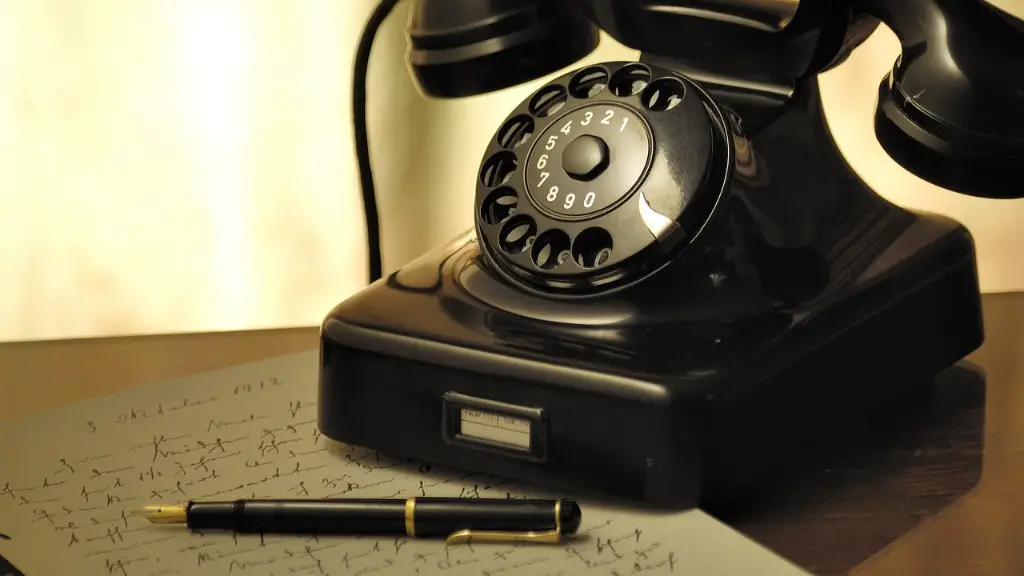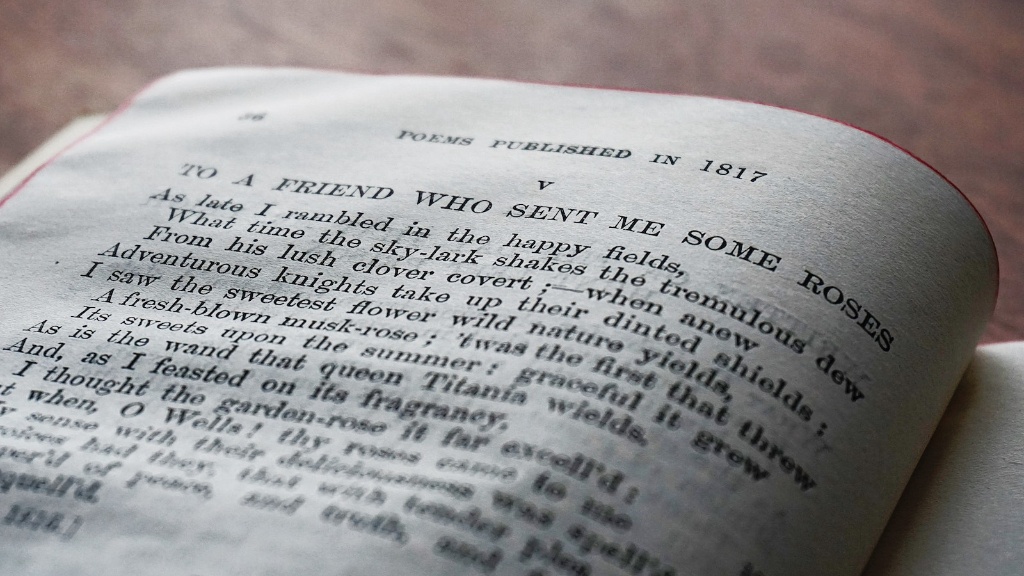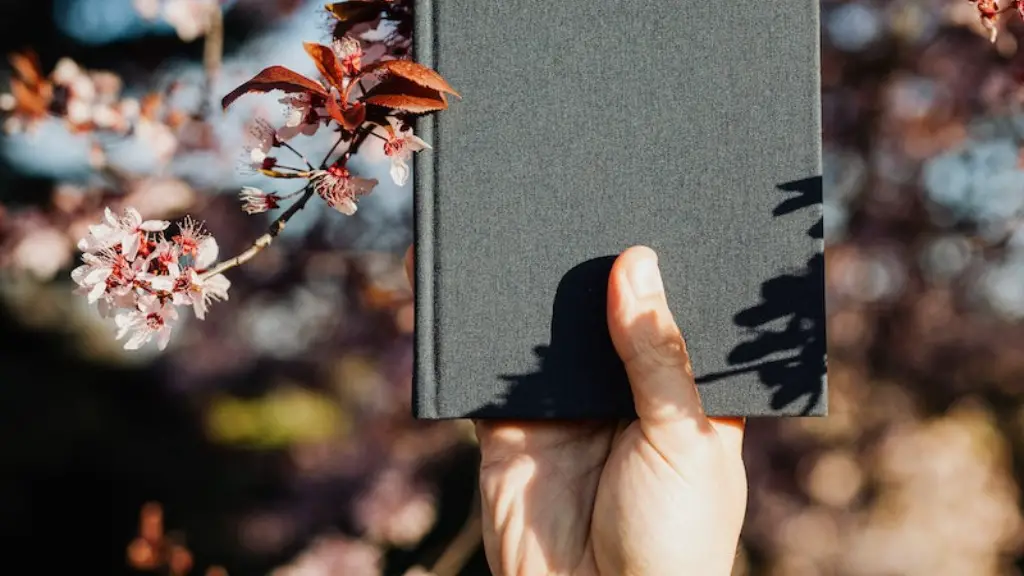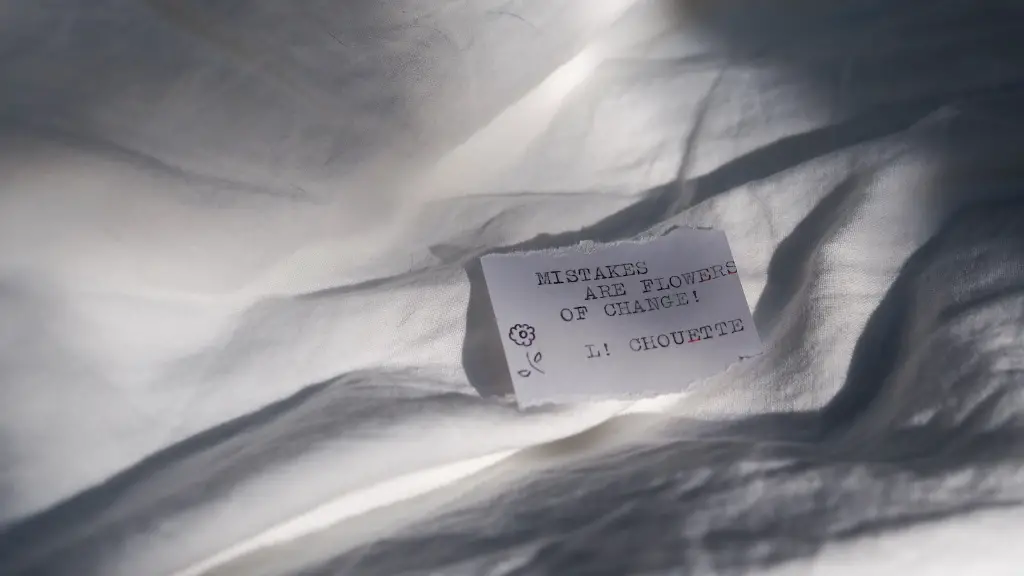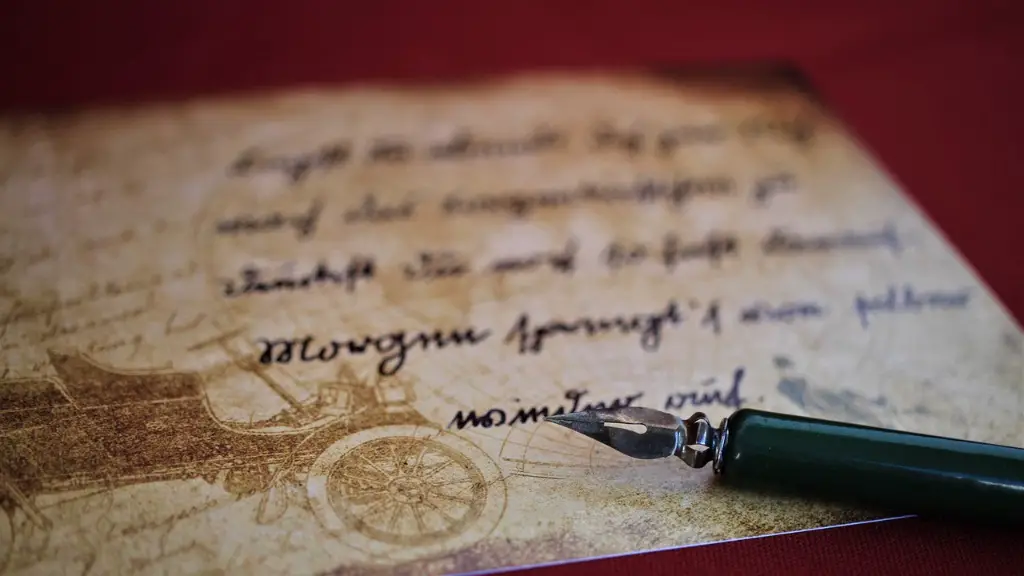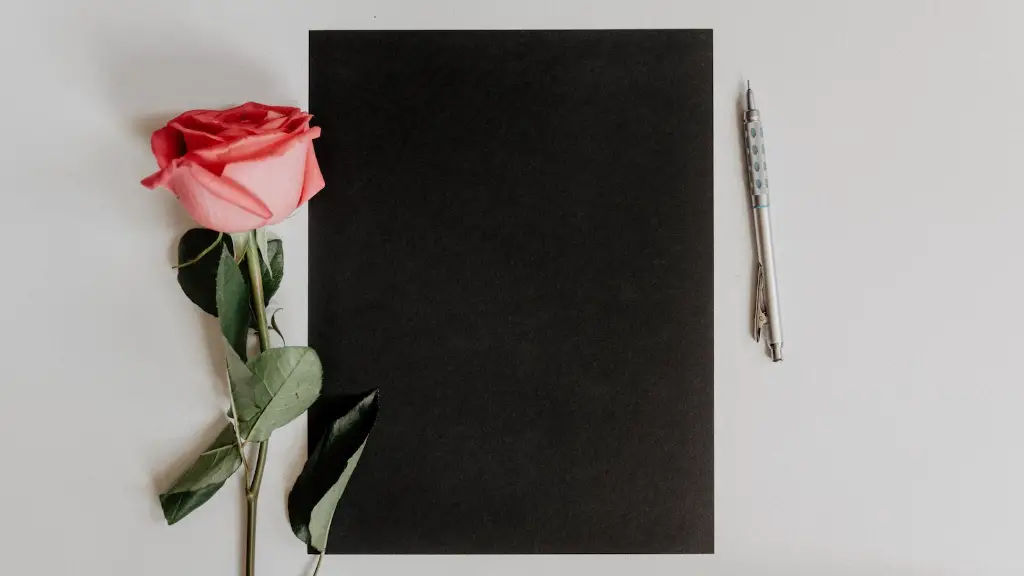Onomatopoeia is a combination of words that imitate, suggests or describes a sound. It is commonly used in poetry to add interest and mood. Onomatopoeia words can help to create a vivid mental picture so that the listener or reader can imagine the sound or action being described. Using onomatopoeia in poetry can also draw the reader in and help them to connect with the poetry in a more personal way.
The most common types of onomatopoeia words in poetry include animal noises, such as bark, meow and squawk. They can also be used to describe human noises, such as laughter, sobbing and whispering. The meter and rhythm of poems are also enhanced when onomatopoeia words are used. Poets often use them in combination with other poetic devices, such as rhyme, assonance and alliteration, to create a particular sound effect.
Certain cultures use onomatopoeia differently. In the Chinese literary tradition, poets often used the Chinese characters ‘彌’ and ‘唳’ to represent the sound of a roar. In Japanese literature, poets use onomatopoeia to evoke a romantic feeling, so the reader can more easily relate to the emotions being portrayed. Here, onomatopoeia may be used to represent sounds that are not traditionally associated with physical sound, such as feelings of happiness or sadness.
Many poets use onomatopoeia to draw the reader in and add a layer of depth to their work. It can also create a sense of rhythm and musicality in a poem. For example, the line ‘the station clock chimed and clanged’ evokes a strong image of time passing and creates a rhythm that helps to keep the poem moving forward.
Exploring onomatopoeia words in poems can provide a great opportunity to practice diverse and creative writing. By using onomatopoeia in their work, poets are able to further engage their audience with the subject matter and evoke powerful emotions. By listening to the sounds these words create, readers can interpret the imagery hidden within the poem and gain deeper insight into the writer’s perspective.
What Are Onomatopoeia Figurative Language?
Figurative language is a form of language that uses figures of speech to enhance the meaning of words. Onomatopoeia is one type of figurative language. It is the use of words to express sounds, often for comedic or rhetorical effect. As a type of figurative language, onomatopoeia relies on the reader to make the connection between the sound and the written word. It is commonly used in poetry to create sound effects, emphasis and to describe characters.
For example, the word ‘buzz’ can be used to describe the sound of an insect or engine. The word ‘whir’ can be used to describe the sound of a windmill or a machine. By using onomatopoeia words, poets can evoke vivid mental images of the sounds they are trying to describe and engage readers in a more personal way.
Onomatopoeia words can help to bring attention to important elements within a poem, such as a character’s mood or behaviour. For example, the use of ‘sob’ in a poem can invoke feelings of sorrow in the reader and help to bring attention to the character’s emotional state.
Onomatopoeia is a creative and effective way of breathing life into poetry. It can be used to create poetic masterpieces that engage and excite readers. By experimenting with onomatopoeia words in poems, writers can craft an evocative work of art that effectively communicates their message.
Analysis of Onomatopoeia in Poetry
The use of onomatopoeia in poetry allows writers to breathe life into their words and capture sound with words. This type of figurative language is often used to express emotion and convey movement, such as the sound of rain, thunder or running water. Onomatopoeia can be used to elicit humour, too. By combining words to create onomatopoeic phrases, poets can create scenes that readers can vividly imagine.
Onomatopoeia words are commonly used in both traditional and modern poetry. For example, Walt Whitman used onomatopoeia to capture the sounds of nature in his poem ‘The Song of the Open Road’. In his poem ‘The Jabberwocky’, Lewis Carroll used onomatopoeia to create a humorous and whimsical atmosphere. Similarly, in the poem ‘The Second Coming’ by W.B. Yeats, onomatopoeia is used to create a sense of apocalyptic dread.
By using onomatopoeia words in their writing, poets can create vivid mental images and evoke emotions in readers. Onomatopoeia words can help to convey a sense of motion and motionlessness. For example, the word ‘clatter’ can be used to describe the sound of a carriage moving quickly or ‘hush’ to describe the stillness of a forest. Onomatopoeia words can also help to express a character’s emotion. For example, the word ‘sob’ can evoke feelings of sorrow and pain.
By carefully selecting onomatopoeia words and creative metaphors, writers can craft powerful and evocative poems. Onomatopoeia words can help to add rhythm, humour and emotion to a poem and draw readers in to the world being described. By experimenting with onomatopoeia words in their work, poets can create captivating poems that engage and delight readers.
Benefits of Using Onomatopoeia in Poetry
Onomatopoeia words are often used to create sound effects, emphasis and to describe characters. By carefully selecting onomatopoeia words and creative metaphors, writers can craft powerful and evocative poems. Onomatopoeia can be used to evoke strong emotions in readers, such as sorrow, joy or fear. It can also be used to create vivid mental images, so readers can imagine the sound or action being described.
Using onomatopoeia in poetry can help to create a sense of rhythm and musicality. By using onomatopoeia in combination with other poetic devices, such as rhyme, assonance and alliteration, poets can create a particular sound effect and help to keep the poem moving forward. Onomatopoeia is also an excellent way to add interest and flavor to poems.
Studying onomatopoeia words in poetry can also help to improve writing skills. Exploring this type of figurative language can help students to get comfortable with using words creatively. It can also help to teach students the importance of economy of language and develop their ability to create images with words.
Onomatopoeia words in poetry can be used to engage readers and make a poem more memorable. By experimenting with onomatopoeic words, poets can craft an evocative work of art that effectively communicates their message.
Fun Examples of Onomatopoeia in Poetry
Onomatopoeia is a creative and fun way to express sound in poetry. It is a great way to get creative with words and explore the world of sound. Many famous poets have used onomatopoeia in their work, such as Emily Dickinson, E.E. Cummings and Robert Frost.
For example, Robert Frost’s poem ‘Mending Wall’ uses the word ‘shovelsong’ to represent the sound of the shovel scraping against the stones. Similarly, in E.E. Cummings’ ‘May I Feel Said He’, onomatopoeia words such as ‘tinkle,’ ‘hush’ and ‘whistle’ are used to express sound. Emily Dickinson’s poem, ‘Hope is the Thing with Feathers’, also uses onomatopoeia to create vivid imagery, with words such as ‘tune’, ‘flutter’ and ‘sing’.
Traditional nursery rhymes and songs are also a great source of onomatopoeia words, such as ‘buzz’ and ‘bark’. Poems for children can be particularly effective at using onomatopoeia, as they can help to create a vivid mental image of the sound and add a layer of fun to the poem.
Onomatopoeia in poetry can be a great way to engage readers and express sound in a creative and entertaining way. By experimenting with onomatopoeia words, poets can craft an evocative and memorable work of art.
Advanced Use of Onomatopoeia in Poetry
Onomatopoeia can be used to create powerful and vivid images in poetry. By carefully selecting onomatopoeia words, poets can add emotion, rhythm and flavor to their work.
Advanced use of onomatopoeia in poetry can involve the use of multiple onomatopoeic phrases in combination with other poetic devices. For example, the phrases ‘purr’ and ‘roar’ can be combined to form an onomatopoeic phrase ‘purr-roar’ (e.g. The engine purr-roared to life). Combining onomatopoeic phrases with rhyme and alliteration can create a more musical effect and help to add emphasis to an image.
Another advanced use of onomatopoeia in poetry is the use of double onomatopoeia. In this case, two words are combined to create a single sound effect, such as ‘hush’ and ‘crush’ to create ‘hush-crush’ (e.g. The waves hush-crushed against the shore).
Using double onomatopoeia can create a more evocative image for readers and help to express the emotion and the movement of a scene. This can be a great way to create a more dynamic and memorable poem.
Onomatopoeia in Other Genres of Literature
Onomatopoeia can be used in many genres of literature, such as fiction, non-fiction, drama, and prose. It is often used in comic books, as a way to create sound effects and give the characters a more dynamic and realistic feel. For example, the sound effect ‘ka-pow’ can be used to describe the sound of a punch or explosion.
Onomatopoeia is also commonly used in children’s books and songs. By using onomatopoeia, authors can create an image of sound more vividly than if they were to simply describe it. For example, the phrase ‘baa baa black sheep’ can be used to create a mental image of a sheep’s bleat. Similarly, ‘tick tock’ can be used to evoke the sound of a clock.
Onomatopoeia can also be used in advertising and marketing, to draw attention to a certain product or service. The use of onomatopoeia in advertising can help to create an emotional and memorable connection with the audience. For example, the phrase ‘snap, crackle, pop’ has become synonymous with the cereal brand Rice Krispies.
Onomatopoeia can be a powerful tool of expression in the world of literature. By experimenting with on
